Despite popular belief that card gambling is nowhere near its mid-2000s heights, the world’s most established skill-based betting game is still going strong in most regions. For example, in France, gross revenues for online poker are up 37% compared to before the pandemic. And the same holds for most top US markets. So, organisers of real-money poker entertainment are doing well everywhere. But how do poker rooms make money, specifically dedicated ones, those part of massive casino complexes and virtual hubs?
Whether you’re an entrepreneur planning a card-hosting venture of any kind or an ardent player considering turning a hobby into an enterprise, understanding how much it costs to open a poker room, run it, and what kind of profits you can expect from this endeavour before starting is crucial.
In the short guide below, we explore how online poker websites earn money and what their land-based counterparts do to present a positive bottom line. We will also discuss the potential earnings and prerequisites for launching a thriving poker enterprise below.
How Do Poker Rooms Make Money: The Main Revenue Streams
How much does gambling make in a year? According to a June 2022 research on ReportLinker.com titled “Global Gambling Industry,” this sector is projected to reach $876 billion by 2026. However, the majority of these revenues come from casino gaming and sports betting, which are operator vs. player businesses.
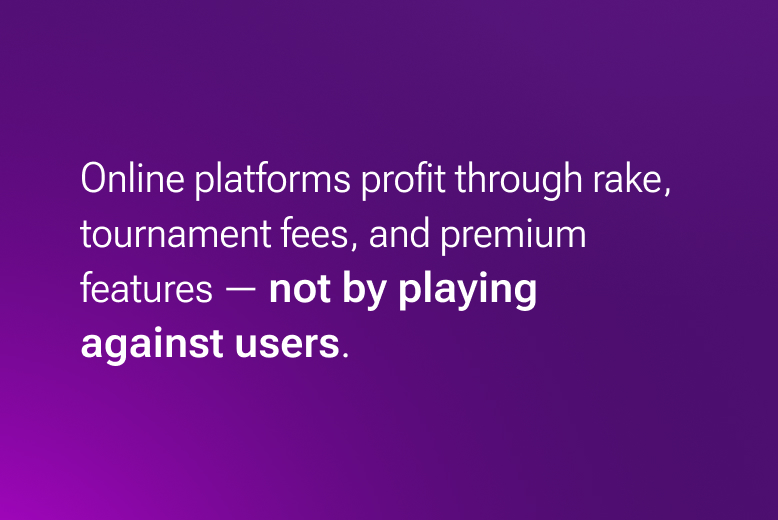
In poker, gamblers compete against each other, and the methods by which poker rooms attain cash are entirely different, employing specific models that do not apply to gaming and sports wagering.
One of the primary ways poker companies generate revenue is through something called a rake. What is a rake in poker? That is a fee collected from each pot in games, ensuring a consistent income stream and enabling operators to cover their operational costs and turn a profit. Typically, rake percentages range from 2% to 10% of the pot, with predefined caps in place to protect players’ interests.
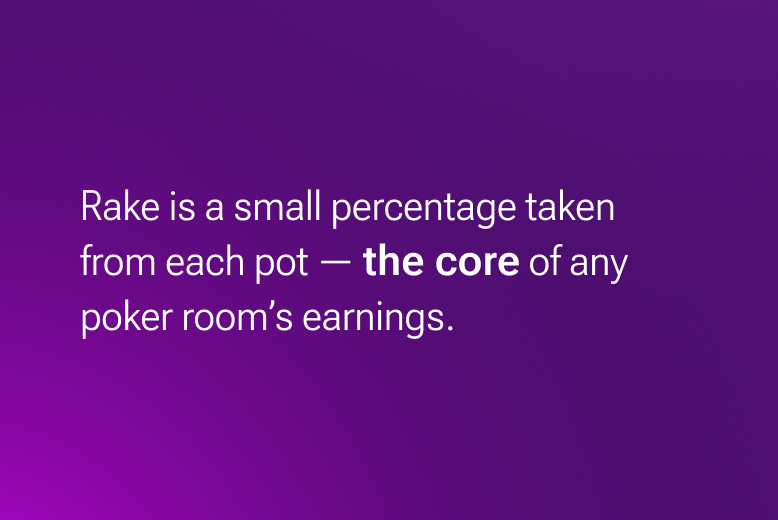
In addition to this traditional scheme, innovative approaches have emerged in how online poker sites make money. Some Internet card gambling hubs adopt a no-rake system and instead focus on enhancing the user experience through premium subscriptions and optional in-game purchases. While this system has got implemented in brick-and-mortar establishments, it is predominantly a fixture on card websites.
Tournaments also play a significant role in profitability, serving as the backbone of this gambling arena. By imposing entry fees, known as buy-ins, poker organizers secure profits that vary based on the size, prestige, and prize pool their competition boasts.
It’s worth noting that sponsored content, affiliate partnerships, and marketing deals can contribute to an operator’s overall revenue generation.
| Revenue Stream | Description | Applies to Online | Applies to Offline |
| Rake | % taken from each pot |
Yes |
Yes |
| Tournament Entry Fees | Fixed buy-in + fee structure |
Yes |
Yes |
| Premium Subscriptions | Monthly/annual fees for added features |
Yes |
No |
| In-Game Purchases | Avatars, themes, special tables, etc. |
Yes |
No |
| Sponsored Content & Ads | Brand placements, banner ads, cross-promotions |
Yes |
Yes |
| Poker Run Events | Branded or charitable live/online events |
Yes |
Yes |
Poker Run Ideas and Side Hustles
In addition to traditional poker business models, organisers often experiment with poker run ideas to generate extra income and boost community engagement. These events, which typically combine poker with other activities like charity rides, boat races, or online treasure hunts, can attract diverse audiences and introduce the game to new markets.
How to make money online poker? One way is by organising themed poker runs with attractive prizes, sponsorships, and buy-ins. These events create buzz, encourage player acquisition, and serve as marketing tools that drive future traffic to your main platform.

How Much Money Do Poker Rooms Make
Now that we have clarified the basics of how poker rooms make money. Let’s move on to how much they rake in, pun intended.
The potential earnings from owning a physical/online poker room can be lucrative; there is little doubt about that. However, the scale of profitability an operator will see depends on various factors. These include stake levels, player traffic, effective marketing, and quality management of operational costs, to name a few.
Based on the paragraph above, the size of a poker business and the amount of money invested will dramatically affect its profitability. A well-operated mid-range card gambling venture can generate thousands to hundreds of thousands of dollars per month.
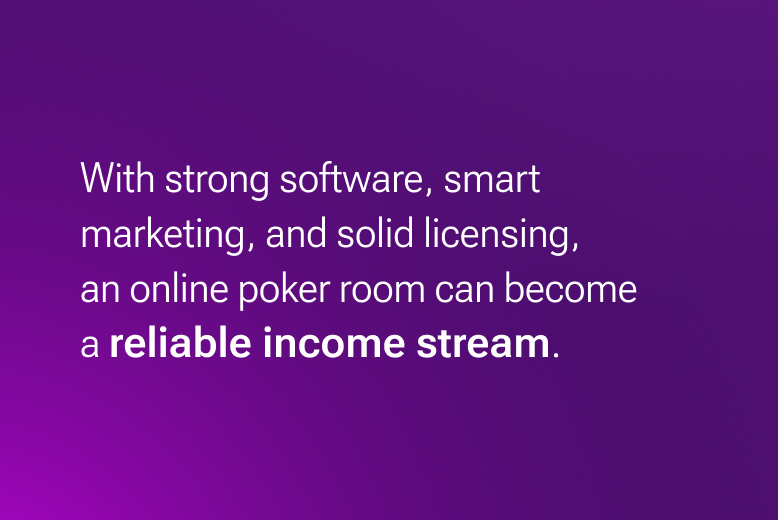
To get a clearer sense of the earning potential in this sphere, here are some stats regarding the US market, where online poker holds a significant share, despite not being regulated in most states. In 2022, the total revenue of the American online poker sector amounted to $61.4 million, with Pennsylvania and New Jersey contributing the lion’s share of this number with $33.6 million and $27.3 million, respectively.
Nonetheless, it should get noted that the brands offering online card services in both states are industry juggernauts worth billions, and they expect their platforms to generate millions monthly to stay out of the red.
Only high-level operators can enter developed territories, as only they can pass the licensing process there and pay the mandatory fees. Therefore, lower-tier companies seek to operate in the laxer international arena. That refers to obtaining licenses from Caribbean regulators like Antillephone, CIL, Gaming Curacao, and Panama’s Gaming Control Board, which cost less, allow them to accept players from multiple countries, and impose less stringent rules on operators. The cited bodies are reputable but do not incorporate as strict guidelines as US regulators or ones specific to countries like the UK and those in Scandinavia. Internationally-licensed sites can expect monthly profits in the tens of thousands of dollars because, as a rule of thumb, they have less brand appeal and recognition.
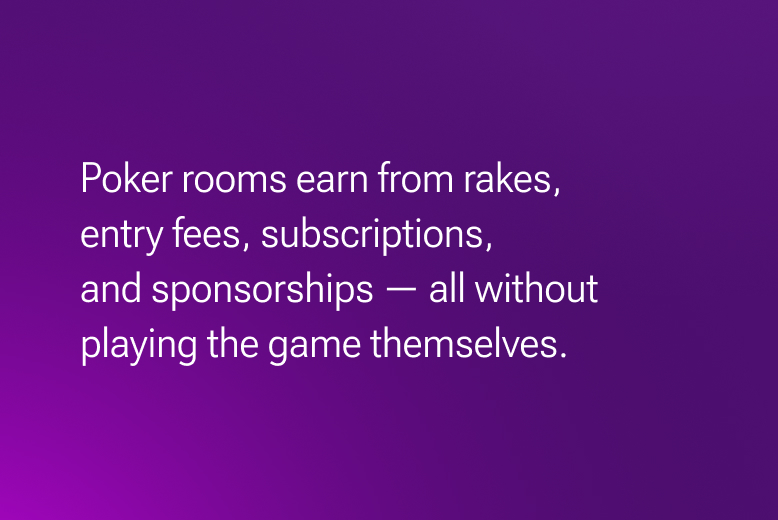
Again, how do online poker websites earn money? They do so in the same way as their physical competitors, and achieving profitability on both sides of the industry requires diligent management and strategic decision-making, entailing cost optimization, implementing tested customer retention approaches, and running inventive ad campaigns.
How Does the House Make Money on Poker
At the core of every poker room’s business model lies a simple truth: how does the house make money on poker? Primarily through rake collections and tournament entry fees. But in many online platforms, profits also stem from extended monetisation models like loyalty programs, premium avatars, and pay-to-play private rooms. The combination of these streams enables the house to maintain a healthy revenue flow without needing to directly play against users, as is the case in casino games.
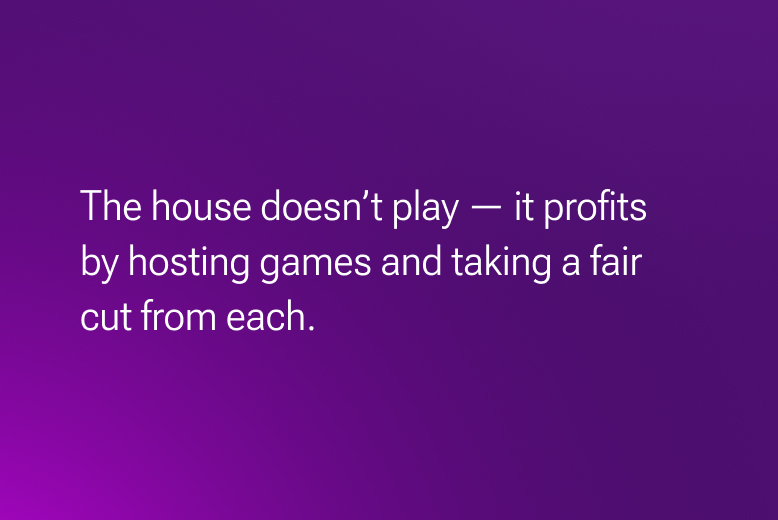
Getting Started: Launching an Online Poker Room
Embarking on launching a poker operation requires careful planning and execution. Given that an in-depth manual on this subject is beyond the scope of this article, here’s a checklist that can help anyone get started in this field:
- Secure Reliable Software: Partnering with a trustworthy provider like EvenBet Gaming to create poker software that is suitable or obtain a customisable premade solution should always be the first step, as this is the backbone of every internet card gambling business.
- Regulatory Compliance: An operator should grasp the legal requirements of where they want to get customers from and attain the necessary licenses/certifications from those jurisdictions. Compliance with gambling regulations evokes trust in potential users.
- Seamless Payment Processing: Facilitating smooth transactions for players, preferably featuring multiple payment options, like e-wallets, credit/debit cards, and cryptocurrencies, is vital today.
- Exceptional Player Support: One important aspect to consider is establishing a robust support system that includes live chat, email support, and an extensive FAQ page. Polls have shown that a commitment to providing above-average support fosters loyalty.
To Warp Up the Topic of How Poker Rooms Make Money
Poker room profitability relies on multiple streams. However, the rake takes centre stage. Tournament fees and no-rake schemes can provide additional profit opportunities, but they cannot compete with pot commissions in most cases.
Running a poker business can be lucrative if one is familiar with this sector’s best marketing practices, comprehends strategic management, and focuses on the player experience. For an online poker website to make money, partnering with a trusted software provider is a must. So is getting regulatory compliance and optimising payment processing while offering decent customer support.
Mid-tier operators can expect a cash flow of dozens of thousands of dollars from this endeavour, which requires innovation and dedication for anyone to stay afloat in this competitive realm. Mid-tier operators can expect a cash flow of dozens of thousands of dollars from this endeavour, especially if they creatively deploy poker run ideas and understand how to make money in online poker. Success here demands innovation, precision, and ongoing dedication to stay afloat in this competitive realm.





 Upd: 11 June 2025
Upd: 11 June 2025 




















